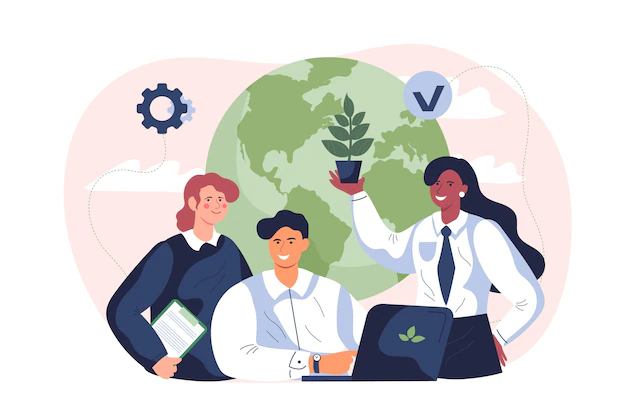200 Work Conversation Starters for Building Better Connections


by Signe Hegart
November 6, 2023
In today’s fast-paced business world, building strong connections with colleagues and employees is essential for success. One effective way to foster these connections is through meaningful work conversations. These conversations not only break the ice but also create a positive and collaborative work environment. To help you get started and enhance engagement within your organization, we have compiled 200 work conversation starters, designed to spark engaging dialogues and facilitate connections among team members. These conversation starters can also play a crucial role in discussing and understanding the impact of employee incentives, further strengthening the bonds within your workplace.
Jump to section
What are Work Conversation Starters?
Work conversation starters are questions, topics, or statements that you can use to initiate a conversation with your colleagues or employees in a work setting. They are designed to spark meaningful discussions, promote team bonding, and improve communication within the workplace.
Why are Work Conversation Starters important?
- Breaking the ice: Starting a conversation can be intimidating, especially with someone you don’t know well. Conversation starters help break the ice and create a comfortable environment for both parties to engage in dialogue.
- Building relationships: Meaningful work conversations can help build relationships with colleagues and employees. These conversations allow you to get to know each other on a personal level, fostering trust and camaraderie.
- Enhancing teamwork: When employees feel comfortable talking to one another, they are more likely to collaborate and work together effectively as a team. Work conversation starters can facilitate open communication and encourage the sharing of ideas and feedback.
- Improving morale and engagement: Engaging in positive and enjoyable conversations at work can boost morale and increase employee engagement. When employees feel valued and connected, they are more motivated and productive.
- Creating a positive work culture: Work conversation starters contribute to creating a positive and inclusive work culture. They encourage employees to be open, empathetic, and supportive, leading to a more harmonious and collaborative work environment.
Read also: 50 HR Tools That Will Transform Your Talent Management Strategy
3 quick statistics about employee engagement ????
- Highlighted in Quantum Workplace’s 2023 report on employee engagement trends, a remarkable 92% of executives attest to the superior performance of engaged employees when compared to their disengaged peers. Additionally, the report emphasizes that 56% of CEOs credit their employees’ engagement efforts for delivering a positive return on investment (ROI).
- Diversity, equity, and inclusion are intrinsically linked to employee engagement. Specifically, the greater the sense of inclusion within a diverse workforce, the higher the levels of engagement within the organization. According to findings from the Global Industry Report on the Influence of Employee Engagement on Promoting Diversity and Inclusion, organizations that actively foster diversity, equity, and inclusion experience a significant 3.2-fold increase in the number of employees exhibiting heightened levels of engagement.
- Gallup’s research demonstrates that engaged employees encounter considerably lower levels of stress, anger, and health issues. Furthermore, when employees perceive that their efforts are being acknowledged for their excellence, they not only flourish but also contribute to organizational success. Regrettably, the aforementioned global workplace research indicates that this recognition is a reality for just 21% of employees, leaving the majority with unfulfilled aspirations, at least for the time being.
Work Conversation Starters and Employee Incentives for Success

Employee Engagement
Employee incentives as gift cards are often used to boost motivation and engagement among employees. Offering employee rewards and recognition for good performance can create a sense of achievement and satisfaction, which, in turn, can lead to more open and positive conversations among employees. When employees feel valued and motivated, they are more likely to engage in conversations and collaborate effectively.

Use of Conversation Starters
Work Conversation Starters can be a tool to facilitate discussions about employee incentives. For example, during team meetings or one-on-one conversations, managers can use conversation starters to discuss upcoming incentive programs, recognize employees’ contributions, or gather feedback on the effectiveness of existing incentives.

Feedback and Improvement
Work Conversation starters can be used to gather input from employees about the types of incentives they find most motivating. This feedback can help organizations tailor their incentive programs for employees to better meet the preferences and needs of their workforce, thereby improving overall engagement and performance.

Recognition and Appreciation
Work Conversation starters can include topics related to recognizing and appreciating colleagues for their efforts and achievements. This ties in with the idea of employee incentives, as part of the incentive programs may involve public or private acknowledgment of outstanding work.

Building a Positive Culture
A workplace that encourages open and positive conversations about rewards and incentives can foster a culture of transparency and fairness. This can contribute to a more motivated and engaged workforce, as employees understand the connection between their efforts and the incentives they receive.

Send yourself an employee incentive
200 Work Conversation Starters
Icebreakers and General Conversation Starters
1. What’s the best part of your morning routine?
2. How do you unwind after a long day at work?
3. What’s your favorite local lunch spot?
4. Have you discovered any new hobbies lately?
5. What’s the most interesting thing on your desk?
6. Share a recent accomplishment you’re proud of.
7. Tell me about your most memorable vacation.
8. What’s your go-to coffee order?
9. How do you stay motivated on challenging days?
10. What’s the latest movie or TV show you’ve enjoyed?
11. Do you have any exciting weekend plans?
12. What’s a fun fact about yourself?
13. How do you like to stay organized at work?
14. Share your favorite team-building activity.
15. What’s a book you recommend to others?
16. Tell me about your dream travel destination.
17. What’s the best piece of advice you’ve received?
18. How do you handle work-related stress?
19. Share a recent adventure or experience.
20. What’s your preferred way to start the workday?
Work and Career Focus
21. What’s your role within the company?
22. What led you to this career path?
23. Can you recommend any industry publications?
24. How do you set and track your career goals?
25. What’s the most challenging project you’ve worked on?
26. Do you have a favorite work-related memory?
27. Share a recent professional achievement.
28. What skills do you believe are crucial in our industry?
29. How do you handle tight deadlines at work?
30. How do you balance work and personal life?
31. What’s the latest industry trend that caught your attention?
32. Can you recommend any online courses for professional development?
33. How has remote work impacted your job?
34. Share your best method for receiving feedback at work.
35. What’s your favorite work-related book?
36. How do you stay up-to-date with industry news?
37. Tell me about your long-term career aspirations.
38. What’s the most innovative project you’ve been a part of?
39. Share your thoughts on the future of our industry.
40. How do you approach problem-solving in your role?
Team and Collaboration
41. What do you appreciate most about our team?
42. Share a favorite team-building experience.
43. How do you encourage teamwork within your department?
44. What’s your preferred method for resolving team conflicts?
45. What’s your favorite team tradition or ritual?
46. How do you handle setbacks as a team?
47. Share your favorite teamwork success story.
48. How do you promote a positive team culture?
49. What’s the most valuable team-building lesson you’ve learned?
50. How do you keep your team motivated and engaged?
51. What’s your preferred approach to team communication?
52. How do you foster innovation within your team?
53. Can you recommend any team collaboration tools?
54. How do you handle remote team challenges?
55. What’s your go-to method for celebrating team achievements?
56. How do you adapt to changes in your team’s dynamics?
57. Share your favorite team recognition approach.
58. How do you navigate conflicts within your team?
59. What’s your favorite team’s shared goal?
60. How do you prioritize your team’s tasks and projects?
Leadership and Management
61. What’s your approach to leadership and management?
62. Share a valuable leadership lesson you’ve learned.
63. How do you handle difficult leadership situations?
64. Can you recommend any leadership development programs?
65. What’s your preferred leadership model or philosophy?
66. How do you promote a culture of accountability in your team?
67. Share a memorable leadership success story.
68. What’s the most significant impact you’ve made as a leader?
69. How do you balance short-term and long-term leadership goals?
70. What’s your favorite leadership book?
71. Share your approach to building a positive team culture.
72. How do you handle conflicts and difficult decisions as a leader?
73. What’s your favorite leadership quote?
74. How do you prioritize employee well-being and work-life balance?
75. What’s your strategy for recognizing and rewarding outstanding team performance?
76. How do you support your team members’ career growth and development?
77. Share your approach to strategic planning for your department.
78. How do you handle leadership development and succession planning?
79. Can you recommend any resources for improving leadership skills?
80. How do you lead and inspire your team during change?
Company Culture and Values
81. What do you appreciate most about our company culture?
82. How do our company values align with your personal values?
83. Share a time when our company’s mission motivated you.
84. How do you contribute to our company’s vision for the future?
85. What’s your favorite company tradition or event?
86. How do you promote diversity and inclusion in our workplace?
87. Share your thoughts on our company’s sustainability initiatives.
88. What’s your most memorable company milestone?
89. How do you stay connected to our company’s purpose?
90. Can you recommend any resources to learn more about our company’s history?
91. What’s your preferred way to participate in company giving initiatives?
92. How do you approach corporate social responsibility within our company?
93. Share your favorite experience of living our company values.
94. What’s your go-to method for living our culture of innovation?
95. How do you stay engaged in our company’s growth and success?
96. What’s your approach to maintaining a safe and inclusive workplace?
97. How do you support a culture of continuous improvement within our company?
98. Share your thoughts on our company’s commitment to employee well-being.
99. How do you contribute to our company’s commitment to the community?
100. Can you recommend any resources for exploring our company’s values and culture further?
Feedback and Personal Development
101. How do you prefer to receive feedback?
102. Share a memorable experience of personal growth.
103. What’s the best feedback you’ve received in your career?
104. How do you handle constructive criticism?
105. Share your approach to setting and achieving personal goals.
106. How do you stay motivated during personal challenges?
107. What’s the most valuable lesson you’ve learned from a mistake?
108. How do you balance your personal and professional development?
109. Share your favorite personal development book or resource.
110. What’s your go-to method for staying organized and productive?
111. How do you handle setbacks and disappointments in your career?
112. Share your approach to mentoring or being a mentee.
113. What’s the most significant impact a mentor has had on you?
114. How do you contribute to a culture of lifelong learning?
115. What’s your preferred approach to personal development planning?
116. How do you encourage continuous learning in your field?
117. Share your favorite professional development opportunity you’ve pursued.
118. What’s your approach to staying current with industry best practices?
119. How do you foster creativity and innovation in your personal development?
120. Can you recommend any personal development programs or resources?
Stress and Well-being
121. How do you manage work-related stress?
122. Share your favorite stress-relief technique.
123. What’s your approach to maintaining a work-life balance?
124. How do you handle burnout in your career?
125. Share your thoughts on mindfulness in the workplace.
126. What’s your preferred method for taking breaks during the workday?
127. How do you promote mental health in the workplace?
128. What’s your go-to strategy for self-care?
129. Share your favorite wellness or relaxation activity.
130. How do you maintain a healthy work-life balance in busy times?
131. What’s your approach to maintaining physical health while working?
132. How do you stay motivated and focused despite work-related challenges?
133. Share your thoughts on the importance of workplace well-being.
134. What’s your go-to well-being resource or tool?
135. How do you encourage your colleagues to prioritize self-care?
136. What’s your approach to handling stress during tight deadlines?
137. How do you contribute to a culture of well-being at work?
138. Share your favorite mental health awareness initiative.
139. What’s your preferred method for promoting well-being in the workplace?
140. Can you recommend any resources for enhancing well-being and reducing stress?
Remote Work and Adaptability
141. How has remote work affected your job?
142. Share your favorite remote work productivity tip.
143. What’s the best aspect of remote work for you?
144. How do you stay connected with your team while working remotely?
145. Share your thoughts on remote work flexibility.
146. What’s your preferred method for maintaining work-life balance while working from home?
147. How do you handle remote work challenges and distractions?
148. What’s your go-to remote work technology or tool?
149. How do you promote a positive remote work culture?
150. Share your favorite remote team collaboration strategy.
151. What’s your approach to remote work communication?
152. How do you stay organized and productive in a virtual work environment?
153. Share your thoughts on the future of remote work.
154. What’s your go-to remote work wellness practice?
155. How do you handle remote team engagement and motivation?
156. What’s your approach to work-life integration when working remotely?
157. How do you encourage a sense of connection and belonging in a remote team?
158. Share your favorite remote work success story.
159. What’s your preferred method for remote team building and bonding?
160. Can you recommend any resources for thriving in a remote work setting?
Leadership and Team Development
161. How do you lead and inspire your team to achieve its goals?
162. Share your favorite team-building exercise.
163. What’s the most challenging team issue you’ve successfully resolved?
164. How do you foster a culture of continuous learning in your team?
165. What’s your preferred method for effective team communication and collaboration?
166. How do you handle team morale and motivation during difficult times?
167. Share your tips for effective team goal setting and tracking.
168. How do you approach team recognition and rewards for outstanding performance?
169. What’s the most memorable team accomplishment you’ve been a part of?
170. How do you handle challenges and obstacles that affect your team’s progress?
171. Can you recommend any resources for developing leadership skills?
172. What’s your preferred approach to fostering a strong team dynamic in a hybrid work environment?
173. How do you encourage teamwork and collaboration within your team?
174. What’s the most valuable lesson you’ve learned from a team member?
175. How do you prioritize work-life balance and well-being for your team?
176. Share your tips for building and managing remote teams effectively.
177. What’s your favorite aspect of your team’s achievements and successes?
178. How do you approach team-building and team bonding activities?
179. How do you handle conflicts and disagreements within your team?
180. What’s the most challenging team-related situation you’ve successfully navigated?
Employee Incentives and Recognition
181. What incentives or rewards do you find most motivating at work?
182. Share a memorable experience of being recognized for your contributions.
183. How do you believe employee incentives impact workplace morale?
184. What’s your preferred method for recognizing and rewarding your team’s achievements?
185. How do you contribute to creating a culture of employee appreciation?
186. Share your thoughts on the importance of acknowledging coworkers’ efforts.
187. What’s your favorite employee incentive program you’ve participated in?
188. How do you promote a culture of celebrating individual and team success?
189. Share your approach to recognizing and motivating employees to excel.
190. How do you handle conflicts or disagreements related to employee incentives?
191. What’s your go-to method for aligning incentives with company goals and values?
192. How do you encourage team members to take initiative and go above and beyond?
193. Share a success story of employee incentives boosting productivity or teamwork.
194. What’s the most significant impact you’ve seen in your workplace from using incentives?
195. How do you create an environment where employees feel valued and appreciated?
196. Share your thoughts on the role of feedback in optimizing employee incentives.
197. How do you approach performance reviews and evaluations within an incentive framework?
198. What’s your preferred approach to balancing individual and team recognition?
199. How do you handle situations where employees have differing incentive preferences?
200. Can you recommend any resources for designing effective employee incentive programs?
Let’s have a chat
How to use Work Conversation Starters effectively ????
Using Work Conversation Starters effectively can significantly improve communication, foster connections, and create a positive work environment. Here are some tips on how to use them effectively:
Choose Relevant Conversation Starters

Selecting relevant Work Conversation Starters is crucial to ensure that the discussions align with the context and objectives of the conversation. Here are some tips for choosing relevant Work Conversation starters:
- Consider the Purpose: Determine the purpose of the conversation. Are you aiming to build team cohesion, discuss a specific project, or get to know a new colleague? Choose conversation starters that serve the intended purpose.
- Match the Setting: Different settings require different conversation starters. In team meetings, choose starters that relate to the meeting’s agenda. In networking events, opt for starters that help break the ice and establish connections.
- Stay Current: Be aware of current events or recent developments in your industry or organization. Relevant conversation starters may include topics related to these events, fostering discussions that are up-to-date and engaging.
Consider the Audience

Tailoring Work Conversation Starters to your audience is a key strategy for making the conversations more engaging and relatable. Here’s how to consider the audience:
- Background and Roles: Take into account the professional backgrounds and roles of the people you’re engaging with. For instance, when speaking with a team of designers, conversation starters related to design trends or creative processes would likely be more engaging.
- Personal Interests: Learn about the personal interests of your colleagues or team members. If you know someone is passionate about a particular hobby, sport, or topic, you can choose conversation starters that touch on those interests. This personalization can make the conversation more enjoyable and meaningful.
- Personality Types: Consider the personality types of your audience. Some people may be more extroverted and enjoy discussing a wide range of topics, while others may be introverted and prefer conversations related to specific areas of interest. Adapting to their preferences can help ensure engagement.
Open-Ended Questions

Open-ended questions are a powerful tool for sparking meaningful discussions. They encourage participants to provide detailed and thoughtful responses. Here’s how to use open-ended questions effectively:
- Depth of Thought: Craft questions that require individuals to delve deeper into their thoughts and experiences. For example, instead of asking, “Did you have a good weekend?” ask, “What was the highlight of your weekend, and why did it mean so much to you?”
- Encourage Storytelling: Open-ended questions often lead to storytelling. They allow people to share their experiences, which can be both entertaining and enlightening. Storytelling can create a more personal connection between participants.
- Facilitate Sharing: Choose questions that invite people to share their ideas, opinions, and insights. This not only enhances the conversation but also promotes the exchange of knowledge and perspectives.
Active Listening

Active listening is a vital component of using Work Conversation Starters effectively. It demonstrates that you value the conversation and helps build stronger relationships. Here are some strategies for active listening:
- Engage with Eye Contact: Maintain eye contact with the speaker. It shows that you are fully present and focused on what they are saying.
- Show Nonverbal Cues: Use nonverbal cues like nodding, smiling, and mirroring the speaker’s body language. These cues indicate your interest and support.
- Ask Follow-Up Questions: When someone responds to a conversation starter, ask follow-up questions to explore their thoughts further. This shows that you’re actively engaged in the discussion.
Create a Safe and Inclusive Environment

Fostering a safe and inclusive environment is essential for productive and comfortable conversations. Here’s how to achieve this:
- Avoid Controversial Topics: When using conversation starters, steer clear of controversial or sensitive topics that may lead to discomfort or disagreement. Focus on subjects that promote positive and open dialogue.
- Encourage Respect: Promote a culture of respect and active listening within your team or organization. Ensure that everyone feels heard and valued, regardless of their background or opinions.
- Set Ground Rules: In some settings, it may be helpful to establish ground rules for discussions to ensure that conversations remain respectful, inclusive, and focused on the intended objectives. Ground rules can guide the behavior of participants and create a safe environment.
By implementing these strategies, you can maximize the effectiveness of Work Conversation Starters and create engaging and constructive conversations in your workplace.
Read also: 50 Welcome Back Gifts For Employees: Show Your Appreciation
Conclusion
Using conversation starters in the workplace can greatly enhance communication and collaboration among team members. By promoting active listening and creating a safe and inclusive environment, these tools can foster productive and comfortable conversations. Remember to engage with eye contact, show nonverbal cues, ask follow-up questions, and paraphrase and reflect to demonstrate your attentiveness. Additionally, avoid controversial topics, encourage respect, and set ground rules when necessary. By implementing these strategies, you can maximize the effectiveness of conversation starters and create engaging and constructive conversations in your workplace.



Let’s have a chat
FAQ
You can create your own Work Conversation Starters by thinking about the specific context and objectives of the conversation. Consider what topics are relevant and engaging for your audience, and craft open-ended questions or prompts accordingly.
Yes, Work Conversation Starters can be effectively used in remote or virtual work settings. They can be integrated into virtual meetings, video calls, and written communication to maintain connections and engagement with remote colleagues.
Work Conversation Starters can cover a wide range of topics, including personal interests, work-related challenges, career goals, industry trends, team dynamics, leadership, and more. The goal is to encourage open and positive discussions.